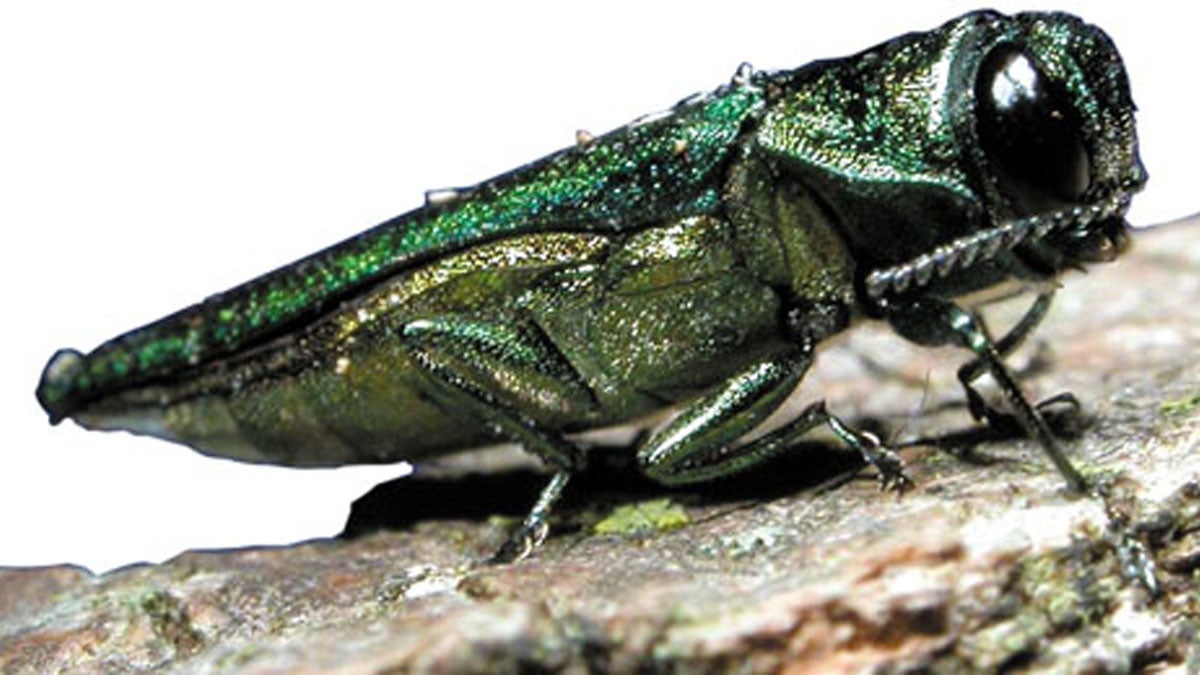Tree-killing beetle spotted in N.J.

Emerald ash borers have been spotted in Bucks and Montgomery counties. Philadelphia is cutting ash trees as a pre-emptive strike. (Image via Flickr/USDA)
An invasive beetle that has been killing ash trees across the United States since it was first spotted in Michigan in 2002 has made its way to the Garden State.
Last month, a landscaper found one of the inch-long green beetles on some unhealthy wood in central New Jersey. State environmental authorities say the discovery isn’t cause for panic, but residents should be aware that the emerald ash borer has landed.
The EAB, as it’s also known, bores a hole through the trunk of an ash tree to lay eggs and eat just below the bark, cutting off the ash tree’s water supply and killing it in just a few years.
In the 12 years the EAB has been in the United States, it has killed an estimated 200 million ash trees. That devastating loss to a single kind of tree resembles the decline of the American chestnut, said Doug Tallamy, a University of Delaware professor of entomology an wildlife ecology.
“All the way from Maine down to Georgia, we brought in the chestnut blight and it essentially killed them all,” said Tallamy.
“And that’ll be the same thing with the ash. If we lose them, you’re losing an entire genus of trees that help to make our forests diverse and productive.”
It also spells bad news for dozens of insects that exclusively feed on ash trees, he said.
Experts estimate the EAB came to the United States on packing material from Asia, and has scattered across the country on firewood and by flying from tree to tree. But, until now, it had largely spared part this region.
“If you look at the map of distribution of emerald ash borer, New Jersey and Delaware are essentially a doughnut hole,” said Craig Schulze, director of the Division of Plant Industry at the New Jersey Department of Agriculture. “Where there’s infestation throughout a good portion of New York, Pennsylvania, Maryland, and Virginia.”
To avoid helping the EAB reach other parts of the state, Schulze suggests residents buy firewood locally, burn it at their camp site, and not move it to different areas.
New Jersey is also planning to provide information and outreach on how landowners can protect their ash trees, which make up about 6 percent of the state’s forests.
WHYY is your source for fact-based, in-depth journalism and information. As a nonprofit organization, we rely on financial support from readers like you. Please give today.




